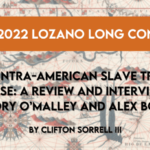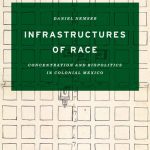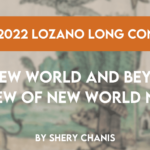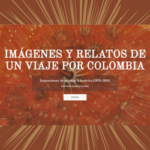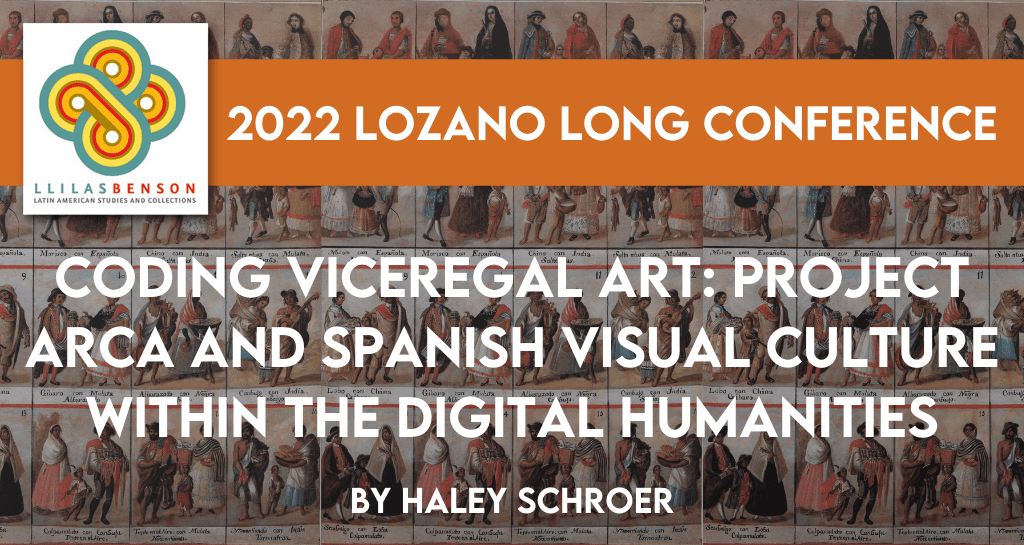
In honor of the centennial of the Nettie Lee Benson Latin American Collection, the 2022 Lozano Long Conference focuses on archives with Latin American perspectives in order to better visualize the ethical and political implications of archival practices globally. The conference was held in February 2022 and the videos of all the presentation will be available soon. Thinking archivally in a time of COVID-19 has also given us an unexpected opportunity to re-imagine the international academic conference. This Not Even Past publication joins those by other graduate students at the University of Texas at Austin. The series as a whole is designed to engage with the work of individual speakers as well as to present valuable resources that will supplement the conference’s recorded presentations. This new conference model, which will make online resources freely and permanently available, seeks to reach audiences beyond conference attendees in the hopes of decolonizing and democratizing access to the production of knowledge. The conference recordings and connected articles can be found here.
En el marco del homenaje al centenario de la Nettie Lee Benson Latin American Collection, la Conferencia Lozano Long 2022 propició un espacio de reflexión sobre archivos latinoamericanos desde un pensamiento latinoamericano con el propósito de entender y conocer las contribuciones de la región a las prácticas archivísticas globales, así como las responsabilidades éticas y políticas que esto implica. Pensar en términos de archivística en tiempos de COVID-19 también nos brindó la imprevista oportunidad de re-imaginar la forma en la que se llevan a cabo conferencias académicas internacionales. Como parte de esta propuesta, esta publicación de Not Even Past se junta a las otras de la serie escritas por estudiantes de posgrado en la Universidad de Texas en Austin. En ellas los estudiantes resaltan el trabajo de las y los panelistas invitados a la conferencia con el objetivo de socializar el material y así descolonizar y democratizar el acceso a la producción de conocimiento. La conferencia tuvo lugar en febrero de 2022 pero todas las presentaciones, así como las grabaciones de los paneles están archivados en YouTube de forma permanente y pronto estarán disponibles las traducciones al inglés y español respectivamente. Las grabaciones de la conferencia y los artículos relacionados se pueden encontrar aquí.
The opening page of Project Arte Colonial greets the user as a digital museum rather than a website. High-resolution baroque paintings slide past the eyes as vivid colors – reds, creams, and browns – fill the screen. Scrolling down, one discovers three options to continue into the site: themes, authors, and regions. The first tab reveals a series of virtual halls organized into categories such as allegories and emblems, angels, and Christology. The second provides an algorithm to filter based on the painter’s last name. The third presents an interactive map in which scholars may simply click on a geographical area to access the works produced in those regions. Utilizing these filters, visitors create their own personalized experience within one of the largest public databases of Spanish colonial art on the internet.
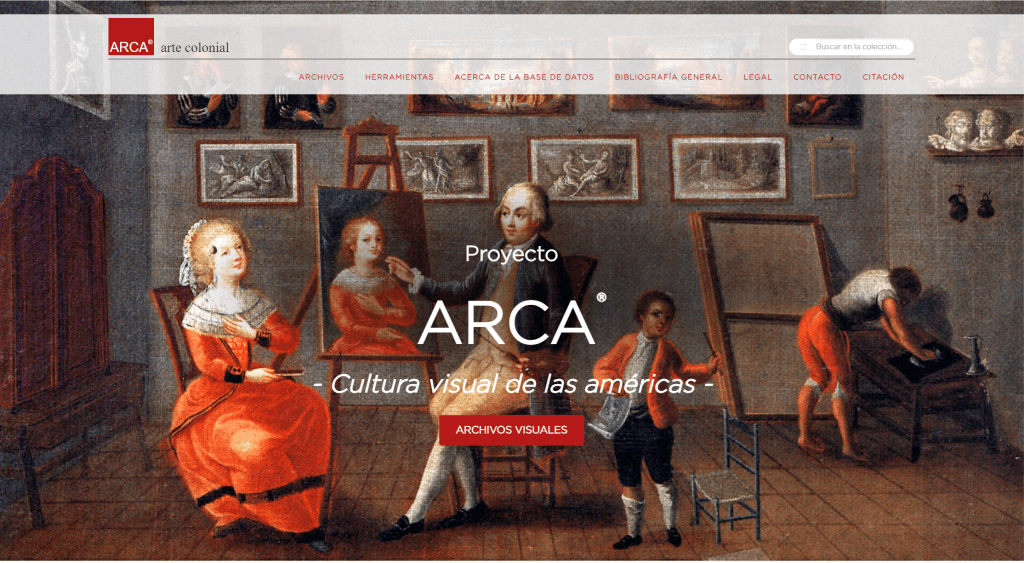
Created by Dr. Jaime H. Borja Gómez in 2015, ARCA collates almost 20,000 paintings produced in colonial Spanish America between 1530 and 1830. Borja Gómez is profesor titular (Associate Professor) at the Universidad de los Andes in Bogotá, Colombia. He received his PhD from the Universidad Iberoamericana in Mexico City, Mexico in 1997. His research focuses on visual culture in colonial Latin America where he examines the role of viceregal painting in New Granada. In 2021 alone he published two books, Esencias y pervivencias barrocas. Colombia en el Nuevo Reino de Granada Los ingenios del pincel. Cultura visual en América colonial, as well as three other articles and book chapters that highlight visual trends throughout the viceregal period.
In addition to his contributions to traditional scholarship, Borja Gómez has worked to promote the value of the digital humanities within the broader academic sphere. His latest project, Arte Colonial (ARCA), is a culmination of these efforts. His presentation at the 2022 Lozano Long Conference seeks to further explore the meanings of the website to academic and public scholarship. Created only five years ago, ARCA attempts to respond to the ways in which technology has changed the social sciences, particularly fields such as anthropology, history, and art history.
According to Borja Gómez, the rise of the internet and digital culture has impacted scholarship not just by providing unprecedented public access to knowledge but also by changing the formats through which historians may present their findings. In addition to traditional publishing routes, scholars can increasingly engage in virtual, visual discussions through coding websites. Because of this, researchers should be able to locate files easily and discuss conclusions within the new technological realm.
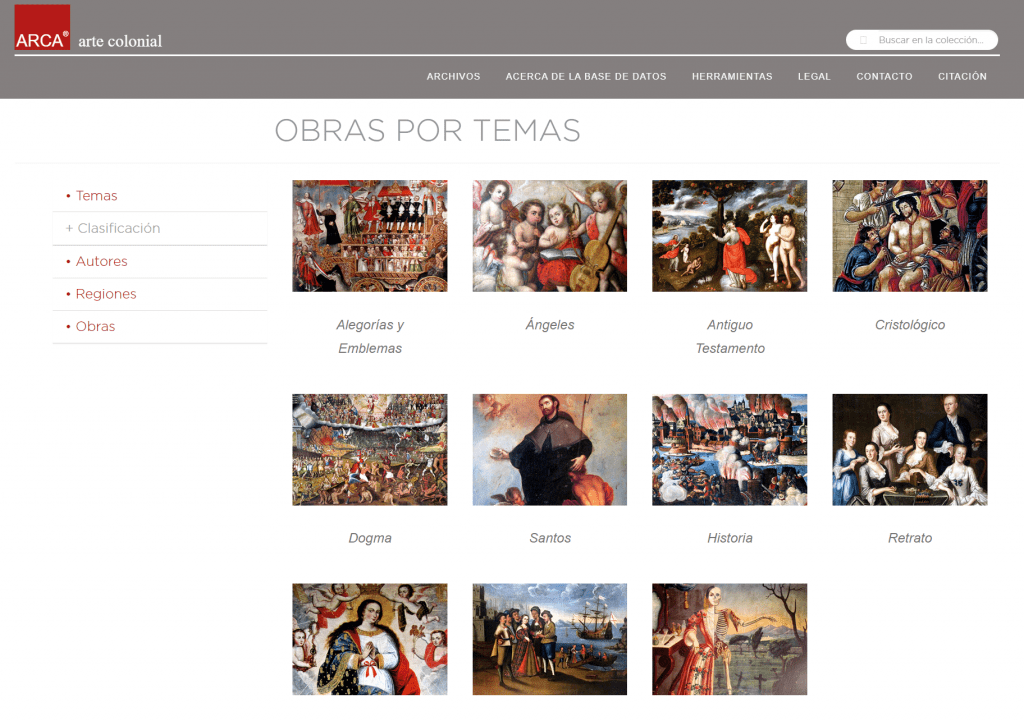
Digital visual offerings have historically focused on European databases and have neglected to provide comprehensive access to the valuable works produced in the Americas during the colonial era. Although Borja Gómez notes that sites such as the Project on the Engraved Sources of Spanish Colonial Art (University of California – Davis) provide access to approximately 3,000 viceregal works, the collection sheds light on only a portion of the paintings produced at that time.[1] ARCA draws much needed attention to the artistic diversity developed over three centuries of Spanish imperial rule. In doing so, it offers critical public access to images previously only seen by those with the means to travel to museums throughout Latin America.
Although the sheer number of sources available on ARCA is striking, the website also provides immense value to both academic and public scholarship for its interface as a whole. It is rare that such a profound image database also possesses a seamless, aesthetically pleasing design. The organization of ARCA guides both specialists and enthusiasts of baroque visual culture through the process of locating and analyzing an image. The fact that both secular and religious images proliferate the collection demonstrates the wide-reaching value of the website. As Borja Gómez admits, doing so “treats the paintings as an archive rather than individual objects.”[2]
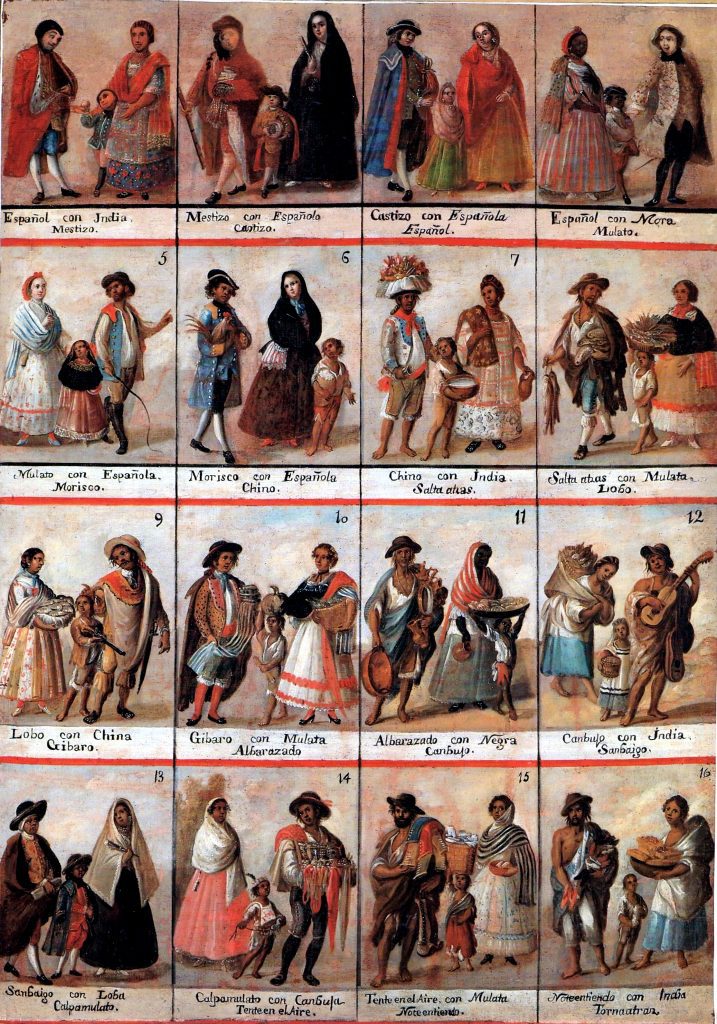
Understanding the image as an archive represents a critical facet of ARCA’s purpose. In addition to bringing visual culture into the digital age, this approach re-centers paintings as a fundamental primary source. Too often scholars focus on written documents to ground their analyses. Yet, portraits and group scenes provide critical information regarding the ways in which people moved and engaged with each other during the colonial era. As Borja Gómez states, one can study “the different systems of bodily norms and values in colonial America” through the analysis of visual sources.[3] Thus, ARCA forces visitors to reconsider the nature of primary sources and how paintings reveal critical information regarding not only the author but also the society in which it was produced.
Throughout the last two years of the global pandemic, digital research has surged among graduate students and faculty alike. Travel restrictions prevented scholars from accessing important sources. Project Arte Colonial and the continuing efforts of Jaime H. Borja Gómez have provided invaluable access to colonial Spanish resources to individuals across the world who are unable to conduct research in-person. The digital humanities have become critical components to fields across the social sciences. ARCA works to create an easily accessible gateway that simultaneously serves veterans and newcomers of remote research. Historians must adopt new and diverse ways to engage with the public and other scholars through the medium of technology.
Haley Schroer is a Ph.D. candidate in Latin American history. Her work focuses on the intersection of race and material culture in colonial Latin America. Her dissertation, “Sartorial Subversions: Appearance, Identity, and Sumptuary Legislation in the Spanish Empire,” examines the rise of racialized clothing laws throughout the seventeenth century. Schroer has received support from P.E.O. International, the Fulbright Program, The Social Science Research Council International Dissertation Research Fellowship Program, and The Conference on Latin American History’s James R. Scobie Award. She is currently a Doctoral Student Fellow with the Institute for Historical Studies.
[1] Borja Gómez, Jaime H., “Proyecto Arca: Pinturas colonials, gentos y contenidos digitales,” Sextante, Universidad de los Andes, https://sextante.uniandes.edu.co/index.php/ejemplares/sextante-6/corrientes/proyecto-arca-pinturas-coloniales-gestos-y-contenidos-digitales.
[2] Borja Gómez, Jaime H., Los Ingenios del Pincel, (Bogotá: Universidad de los Andes, 2021).
[3] Borja Gómez, “Proyecto Arca.”
The views and opinions expressed in this article or video are those of the individual author(s) or presenter(s) and do not necessarily reflect the policy or views of the editors at Not Even Past, the UT Department of History, the University of Texas at Austin, or the UT System Board of Regents. Not Even Past is an online public history magazine rather than a peer-reviewed academic journal. While we make efforts to ensure that factual information in articles was obtained from reliable sources, Not Even Past is not responsible for any errors or omissions.
